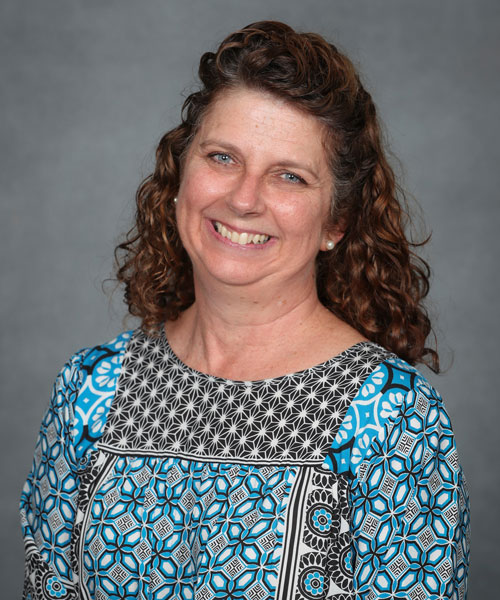Why Educators Should Be Using Podcasts in the Classroom
I recently had the chance to interview Tammi Davis, a professor who spent this semester integrating podcasts into her students’ reading and found out what her students thought of the experience and why she thinks we will see more and more educators using podcasts in the classroom.
Education Technology is Always Evolving
I was part of the lucky generation that watched new forms of media change the way classrooms functioned. In elementary school, we knew it was going to be a great few hours when a huge television with a VHS player was rolled in on a large cart. By the time middle school hit most classrooms had projectors and teachers would play videos from YouTube on the whiteboard. In high school, every student had an iPad and – though pretty much none of our teachers or administration knew how to use them – we all were constantly downloading new apps required for our homework. It isn’t always amazing, but technology and media are always changing the ways we learn and podcasts should be no different.
Integrating Podcasts in the Classroom
Dr. Tammi R. Davis from Missouri State University has been teaching for “more than thirty years. More than twenty in elementary and going on eight to ten in higher education,” she told me. “I’ve always taught a combination of undergraduate methods courses and graduate students.”

Tammi often teaches other teachers; her students are usually already working in their own classrooms and testing out the things they learn about in class. When I asked about the decision to integrate podcasts into her class, she explained that this semester she’s teaching on differentiated learning but was only planning to use readings and videos as content. In other words, not incredibly differentiated. “So, I thought, ‘well, let me try to find podcasts as I build this syllabus, as part of the reading,’” she told me.
As a fan of podcasting — since her son, Bradley Davis (wink, wink, sound familiar? He’s the co-founder and CEO of Podchaser), got her into them — Tammi was excited to introduce podcasts to her students as academic material but knew she shouldn’t do too much too quickly. “I wanted to start small,” she said, “because what if everyone’s feedback was ‘we hate this’?” And honestly, there was a good chance of that happening since, on a beginning-of-semester survey, 47% of her students reported “had heard of podcasts but rarely if at all listen to them.” Only around 23% of students reported frequent listening or love of the medium, so Tammi started out requiring students to only listen to a few podcasts and then collected a bit of feedback before assigning more. “The response was really great,” she told me.
Tammi used Podchaser to create lists of the required podcasts, posting a link online that made it easy for her students to find the specific episodes and use whatever player they preferred. After the first round of feedback, she continued adding podcasts to her reading list and, at the end of the semester, asked her students what they thought of podcasts as academic material.

Do Students Like Listening to Podcasts?
Overwhelmingly, these students, seeking their Masters in Elementary Education loved the incorporation of podcasts into the curriculum.
Fifteen of seventeen students responded entirely positively, the majority of them citing two benefits. One student put it clearly: “I have loved being able to multitask while listening to them.” The fact that students can listen to their readings and are still free to accomplish other tasks was a consistently mentioned benefit of podcasts. “I have several students who commute so they were able to listen as they commute,” Tammi said. “I had students talking to me about listening while folding laundry and other things. They’re very very busy.” As more and more students come to higher education with jobs and families, a hands-free learning experience becomes more and more appealing without sacrificing effectiveness.

Other university instructors might be thinking, that students aren’t giving the reading the proper attention. But the majority of students said that they felt auditory engagement was as or more effective than traditional readings. “I learn better if I am listening to someone and my attention span tends to be higher if I have headphones in,” one student said. Another said, “I retain information more when listening to podcasts than I would reading,” and a third said “with podcasts, I think I am learning about how I prefer to learn.” While many students may find a love for listening to learn, those who don’t are not left behind when podcasts are used.
After using podcasts throughout the semester, students also mentioned that “it is so much easier to listen and take notes than read and take notes,” which allows those who may not be as auditorily-inclined to maximize learning. Actually, even those students who do prefer reading said that “podcasts are easy to listen to” and “are a nice break from just reading.” Tammi herself testified to the fact that all of the students “enjoyed having something different” in the curriculum.
Offering students media that is equally informative, more up to date, and formally unique from the mass amounts of reading their classes requires peaks their interest, accommodates diverse learning preferences, and allows for multitasking in a way that students appreciate and benefit from.

The Future of Teaching with Podcasts
Both podcasters and professors are going to have to take some steps if they expect podcasting to graduate to the level of common practice in classrooms. For podcasters, students’ big request for making podcasts easier to use in academic research and writing: transcriptions. “It can be frustrating trying to quote the podcast for a discussion board post,” one student mentioned, with another echoing a similar sentiment: “I still like to have text to read so I can reread and write quotes more easily.”
Transcriptions also make content easier to access for listeners who do not speak English as a first language, broadening potential audiences substantially. While transcriptions either cost podcasters time or money, if the show is catering to an academic crowd and especially a classroom setting, transcripts make podcasts especially accessible for academia.
Of course podcasts won’t be integrated until professors and teachers choose to make that shift, but Tammi is expecting that more and more podcasts will begin to show up in syllabi, though it will probably take some time. “One thing that I still find when I’m talking about podcasts to people – one of the first questions I’ll ask is ‘do you know what a podcast is?’ – and I’m amazed at how many people still don’t even know what one is,” she told me. But for the ones who do know what podcasts are, the general response to hearing about Tammi’s experimentation with them has been “oh, I should try that” or “why didn’t I think of that?”

While seeing the educational benefits of podcasting for students may turn some into fans of the medium, Tammi pointed out another movement that may be even more effective in drawing academia to the industry.
“I think we’re just scratching the surface right now of different publishing companies having authors appear on podcasts,” Tammi said. She had the benefit of finding a podcast (using a website that helps teacher’s find helpful materials called Teach Thought) that interviewed the author of the text her class was using, and the students reported really enjoying the experience of hearing the author. “I especially liked the podcast with Carol Ann Tomlinson because it was interesting to hear directly from the author,” one student said.
Listening to the interview added personality and relatability to the text students were interacting with and if more academic authors appear on podcasts (“podcast tours” are becoming increasingly common for authors across genres, functioning much like television and radio talk shows) professors will have a direct connection and an easy way to begin incorporating podcasts into curriculum.
Tips for Using Podcasts in Class
When I asked if she had any tips, Tammi again mentioned Podchaser’s Lists as an easy way to get students to the podcasts, but went further to encourage her peers to “not be sacred to do it.” While she had refused to be scared off by her class’s low level of experience with podcasts at the beginning of the semester, she did depend heavily on student feedback and encouraged teachers considering using podcasts to do the same. She did mention that finding helpful and relevant podcasts may be a bit time consuming, the reward is worth it for relevant and impactful content.
So, if you’re a teacher and looking to integrate podcasts into your curriculum, check out Podchaser’s features to find the best podcasts with the people you want to hear from. And if you’re a podcaster that would love to reach into academia, reach out to professors and publishers and encourage them to consider podcasting as a valuable classroom resource. We may just see education revolutionized all over again.
Unlock more with Podchaser Pro
- Audience Insights
- Contact Information
- Demographics
- Charts
- Sponsor History
- and More!

- Account
- Register
- Log In
- Find Friends
- Resources
- Help Center
- Blog
- API
Podchaser is the ultimate destination for podcast data, search, and discovery. Learn More
- © 2024 Podchaser, Inc.
- Privacy Policy
- Terms of Service
- Contact Us